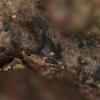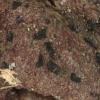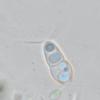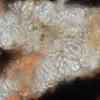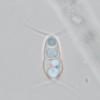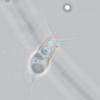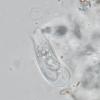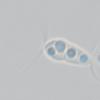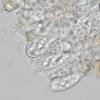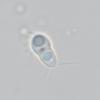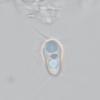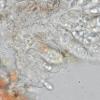
28-10-2025 11:29
 Tanja Böhning
Tanja Böhning
Hello, I found this very small (ca 0,5mm) yellow

27-10-2025 00:34
 Francois Guay
Francois Guay
I found this strange species in Québec,Canada, gr

27-10-2025 15:29
 Michel Hairaud
Michel Hairaud
Bonjour à tous, Avec Elisabeth Stöckli nous avo

26-10-2025 13:39
Joaquin MartinHi,I found this fungus in a mixed forest of spruce

26-10-2025 21:23
Juuso ÄikäsHello, a couple weeks ago I found some pale, whit

23-10-2025 20:59
Patrice TANCHAUDBonsoir, est-ce que quelqu'un posséderait un com
Melaspilea bagliettoana?
Gernot Friebes,
13-05-2025 12:32
I found this one on a Picea abies branch. It looks like it might be Melaspilea bagliettoana, or at least close to it. The ascospores are < 15 µm in length. I'd appreciate your opinion on it.
Best wishes,
Gernot
Zdenek Palice,
13-05-2025 15:25
Re : Melaspilea bagliettoana?
Hallo,
have you seen/measured also (over)mature ascospores that should be getting brown. They would be expectingly longer and could direct you to Melaspile(ell)a proximella. I collected some specimens from Abies/Pinus mugo branches as well as bark of Picea that are sometimes on the lower spore limit for M. proximella but I filed them arbitrarily under M. proximella because M. bagliettoana is presented as a species of (nutrient-richer) bark of deciduous trees like Fraxinus or Populus tremula
Zdenek
Martin Bemmann,
13-05-2025 15:29

Re : Melaspilea bagliettoana?
Hi Gernot,
what else? The other species in question with spores having bipolar setae, Melaspileella proximella, has larger spores with more(?) setae: https://italic.units.it/index.php?procedure=taxonpage&num=2647
Grüße
Martin
Gernot Friebes,
13-05-2025 20:12
Re : Melaspilea bagliettoana?
Thank you, Zdenek and Martin.
I did not see any overmature ascospores.
I excluded M. proximella mostly because of the ascomata which are lirelliform hysterothecia in my material, quite different from typical M. proximella as far as I am aware.
On the other hand, I have not found any records of M. bagliettoana on coniferous wood. But maybe it does switch hosts occasionally...
Best wishes,
Gernot
I did not see any overmature ascospores.
I excluded M. proximella mostly because of the ascomata which are lirelliform hysterothecia in my material, quite different from typical M. proximella as far as I am aware.
On the other hand, I have not found any records of M. bagliettoana on coniferous wood. But maybe it does switch hosts occasionally...
Best wishes,
Gernot
Martin Bemmann,
13-05-2025 20:53

Re : Melaspilea bagliettoana?
M. bagliettoana is reported from Pinus several times in Korea: https://www.researchgate.net/publication/257840645_New_and_noteworthy_lichen-forming_and_lichenicolous_fungi_2
Gernot Friebes,
14-05-2025 12:34
Re : Melaspilea bagliettoana?
I missed that, thank you. In that case I think M. bagliettoana is a reasonable name for this collection.
Best wishes,
Gernot
Best wishes,
Gernot

